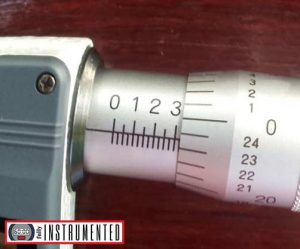When it comes to precision measurement tools and devices such as mechanical micrometer, caliper, indicator, etc, we take the reading in inch reading. You need to know the inch reading is actually an imperial unit system. Here we are going to briefly discuss imperial unit system including its history, the units, and countries that keep using this system.
Brief History of Imperial System
Imperial units have their origin from the time of Romans in the middle ages. The units used evolved since then and their values changed with time until Britain recognized it as a system. The imperial unit system was formally established under the Weights and Measures Act of 1824 and the Act of 1878. The definition of the existing units was precisely described and a new system of units came into existence. The system replaced the Winchester Standard system that was used from 1588 to 1825.
Imperial Units
The 1824 act defined gallon as equal to the volume of 10 pounds avoirdupois of distilled water weighed at a temperature of 62 °F and pressure at which barometer measures 30 inches or 277.274 cubic inches which was later corrected to 277.421 cubic inches.

Moreover, the imperial system introduced two new basic standard units, which were the yard and troy pound. But the 1963 act abolished these old-fashioned ways of measurement and defined standard yard and pound as 0.9144 meters and 0.45359237 kg respectively.
Also, the definition of the gallon was revised. That was made equal to the space occupied by 10 pounds of distilled water of density 0.998859 gram per milliliter weighed in the air of density 0.001217 gram per milliliter against weights of density 8.136 grams per milliliter.
This system used a wide range of units but the most common ones are foot for length (equal to 30.48 cm), pound for mass (equal to 0.373 kg), and second for time. Moreover, mile (equal to 1.609 km) is a frequently used unit in this system used for measuring large distances. The same is the case with ton (equal to 1016 kg) which is used to measure heavy masses.
The imperial unit system was widely used throughout the 19th century, but in the 20th century, it started losing its popularity and eventually the world decided to replace this system with the new one, the metric system. The reason may be caused by the difficulty of properly defining the units in the system. The imperial system used odd ways of defining units that were not constant throughout the world. This lead countries to search for a better system where they can agree upon one unit system that is constant throughout the globe.
Countries Keep Using This System
They found the metric system as a solution to their problem and a quick transition took place from imperial to the metric system throughout the world. However, these 3 countries, USA, Liberia and Myanmar, were rather reluctant to give their formerly used imperial unit system and they continue to do the same till the present date.
These imperial system hold-out countries found it difficult to make a transition in the unit system. They did not want to lose their traditionally used system of units as it was very much accepted in their country. The public found it more logical than the metric system. The USA hated change that was unnecessary and they did not find it profitable. They believed that the cost of change of the system does not logically define the positive outcomes the new system would bring.
However, the American scientists, engineers, military, etc. often have to use imperial to metric conversions in order to communicate with their counterparts in other countries. Liberia and Burma have accepted the SI system of units but they have not completely given up the imperial system. The same thing goes for the USA which has also partially accepted the metric system. It would be a complete surprise if the US gives up measuring distance in miles.
Conclusion
When you are buying a certain measuring tool, you should check the readout unit it has. If you live in the USA, you are familiar with imperial (inch). You need to convert it into inch if it comes with metric system. In this conversion case, you are easy to do it with digital products such as digital caliper, digital micrometer, digital indicator, digital paint thickness gauge, etc. The LCD displays with a conversion button help you do it. However, things are different with a vernier caliper, dial caliper, vernier mechanical micrometer, you have to convert them manually perhaps by using a calculator. Indeed, you won’t merely convert it to imperial, will you? Therefore, recheck whether it’s inch (imperial) or mm (metric).

